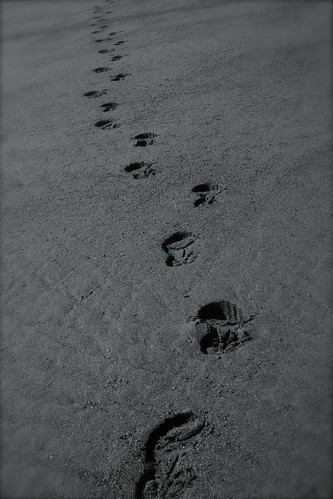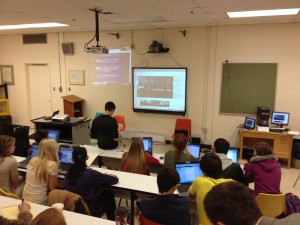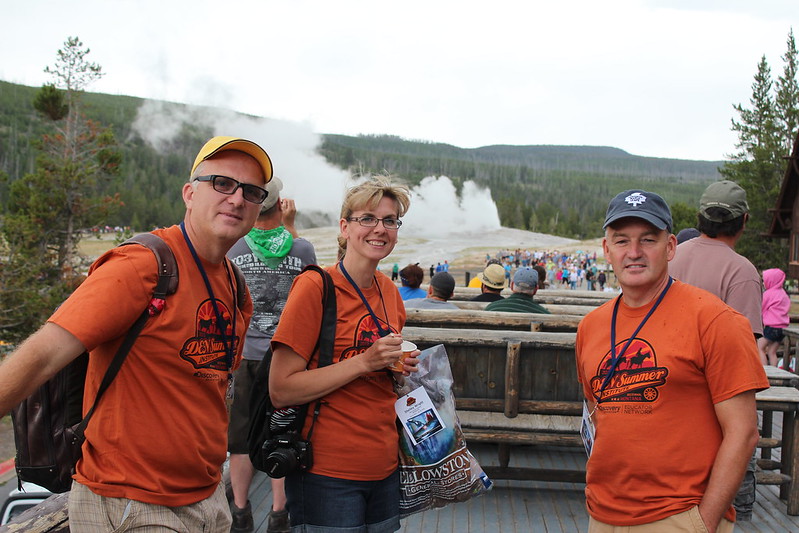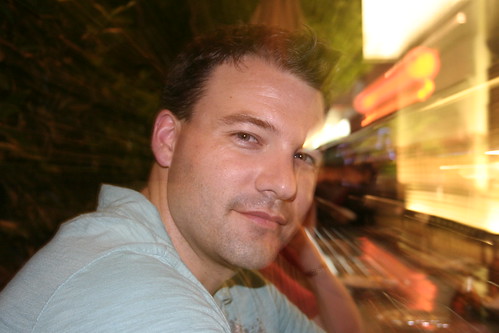As we move into the heart of the digital age, more and more of our lives are accessible to the world. It used to be that we followed the old adage “do no harm” when it came to sharing our thoughts on the web. We spent a lot of time telling kids – and each other – what NOT to do on the web.
Over the past few months I have had several occasions to chat with students – both high school and university – and adult learners about the need to develop and manage their personal digital brands. We can’t just live by the old adage of “do no harm” anymore. Our young people need to learn the skills to actively manage their digital footprints to leverage against their future. We – our students and ourselves – need to be “google-able”.

Image: Non-Digital Footprints, personal collection
Students respond to this message. They love to hear that their web has value and is not just something that can only cause them harm. The message is simple, yet powerful; they not only can, but they MUST take control of their web presence, nurturing it through consistent use of social media and other web tools to present their story to the world. With most employers and post-secondary educational institutions now searching prospective applicants, the need to create a positive web presence falls to the individual. This can happen in multiple ways, but the initial steps I recommend are surprisingly simple.
Email – Before we even get to the web presence, one of the biggest mistakes an individual can make is to use an unprofessional email address. As an instructor, I still receive emails from university students using email address like “sexysarahxoxo <at> hotmail”. I wouldn’t think it would be a stretch for those same students to use that same email to submit a job application to an employer. Bad move. The solution is easy – get yourself a professional personalized email that builds your brand. What’s your brand? Well, my suggestion is that your name makes a real nice brand. While you are at it, go to Gmail (or another site with more professional recognition) and leave Hotmail for SexySarah.
The three solutions I promote next go hand in hand; common branding (usernames) across social media platforms, a web-based digital portfolio and a personalized domain name for your portfolio.
Social Media Branding
Taking control of your digital footprint / web brand starts with recognizing that your social media presence is a calling card for today’s connected community. Your Facebook, Twitter, LinkedIn and other platforms all converge with your other web content to build your brand. By using a common username across platforms, you will build links and profile across the web. What brand to use? I encourage people to use their name? It’s their original brand and people more closely attach their recognition of your ideas to your name.
Web-based Portfolio
The most powerful person to tell your story is you! By building and managing a more formal web presence – for lack of a better term we can call it a “portfolio” – you can share your story with the world. I think blogs – WordPress is my suggestion – are a tremendous platform for hosting these portfolios (see an example from an undergrad BEd student). Ideas and new learning can be continually shared on the blog while other ideas and artifacts live on accompanying pages.
Wouldn’t it be great to see every school start individual student blogs beginning in elementary grades, building on content and skills through middle school and resulting in a full fledged web-based portfolio for graduating students, ready for perusal by the world.
Domain Names
While we are building the branding idea, what speaks louder in a web-based world than a personalized domain? My blog/website is located at jeffwhipple.ca. It’s not about vanity, it’s a conscious effort to link my brand across platforms and build a digital profile. Domain names are cheap (generally less than $15 a year) and easy to link to blogs or Google sites. Again, your name is a great brand and it works nice if it matches your social media username.
I can think of no better graduation gift we could give to high schools graduates than a personalized, individually constructed and managed portfolio with a personalized domain purchased for three years.
The message?…go forth, tell your story and prosper. It’s not an option anymore.





 The
The 

 With such a tremendous response and positive feedback encouraging us, we continued to expand the breadth and depth of our event. We partnered with a neighboring district, found a few additional sponsors, kept the price right (FREE!) and the model simple. In fact, three of us organized the whole thing. As a result, on Monday and Tuesday of this week we welcomed just under 150 educators from around New Brunswick (and even a few from beyond – one came all the way from the Yukon!) to
With such a tremendous response and positive feedback encouraging us, we continued to expand the breadth and depth of our event. We partnered with a neighboring district, found a few additional sponsors, kept the price right (FREE!) and the model simple. In fact, three of us organized the whole thing. As a result, on Monday and Tuesday of this week we welcomed just under 150 educators from around New Brunswick (and even a few from beyond – one came all the way from the Yukon!) to 

